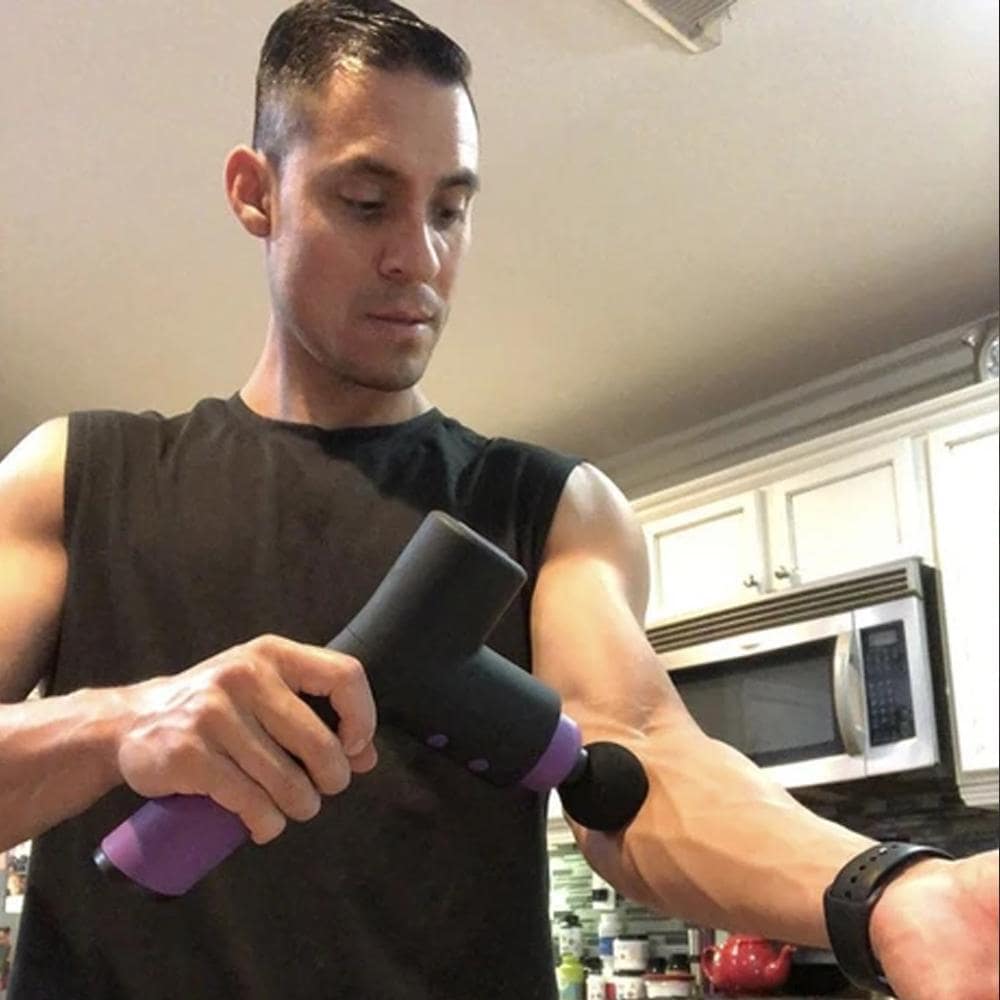You may have noticed recently while watching sports that athletic trainers carry around a device that looks similar to a jigsaw during games, using it on players while they are on the bench or sidelines. These devices are percussion massagers, and they are amazing little devices that produce a series of rapid movements that punch into the body and penetrate deep into the tissue and muscles. These punches help promote tissue repair, relaxation, and pain relief for the players, improving blood flow and range-of-motion in their muscles. These percussive motions used to be only available through a masseuse or physical therapist, but now they can be done with a small handheld device. How do you know which percussion massager is right for you? Well, you need to learn exactly what they do and the options you have to choose from.
How a Percussion Massager Works
A percussion massager is a foam ball or other accessory that is attached to a piston and moved by a battery-powered motor. Generally, percussion massagers can run anywhere from 1400 to 3300 RPM, depending on the model, and these allow for precision and powerful strikes to soft tissue on various parts of the body at just the right frequency. Because of the strength of the handheld devices and the frequency they operate at, they can penetrate deeper into the muscle than hands alone.
Features Available for Percussion Massagers
There are various features that are available, depending on the percussion massager model you look at:
Massage Heads: Professional percussion massagers will often come with a set of interchangeable massage heads that are specially designed for different parts of the body. The most common head is the round head for large muscle groups. There is also the flat head that is used for all parts of the body, but generally smaller parts. The forkhead is used for specific muscle groups, like the Achilles tendon, neck, and spine. A bullet head can be used for joints, deep tissue, and trigger points on the body.
Variable Speed: As mentioned before, many models offer a variable speed (although some do not.) Getting a percussion massager that has a wide range of speeds will give you more flexibility of use. One of the widest ranges for professional models on the market is 1400 to 3300 RPM.
Battery Life: Since percussion massagers are handheld and portable, you want to find one that has good battery life. Most sets of use for percussion massagers are only 15 seconds to 1 minute with multiple reps, but you may have multiple parts of the body you want to work on, and you will want it to last the whole massage session.
Noise: Percussion massagers can get noisy, depending on the model, so depending on where you are using it, you may want to find yourself an ultra-quiet percussion massager for more convenience.
Portability: A handheld device needs a good way to carry it around with its accessories, so a convenient handheld case that can protect the device is a great addition to a quality product.
Whether you are an athlete or recovering from an injury, a percussion massager can help speed up your recovery time; however, you should still consult your doctor if you have concerns about using one on certain injuries.
If you are in the market for variable speed, ultra-quiet percussion massage with multiple interchangeable massage heads for portable deep tissue massage, then check out the VI PRO Ultra Quiet Percussion Massager, manufactured by Vigorous Innovations.

